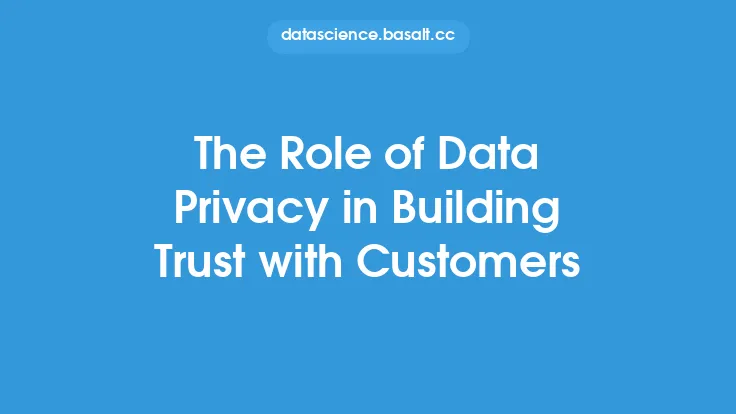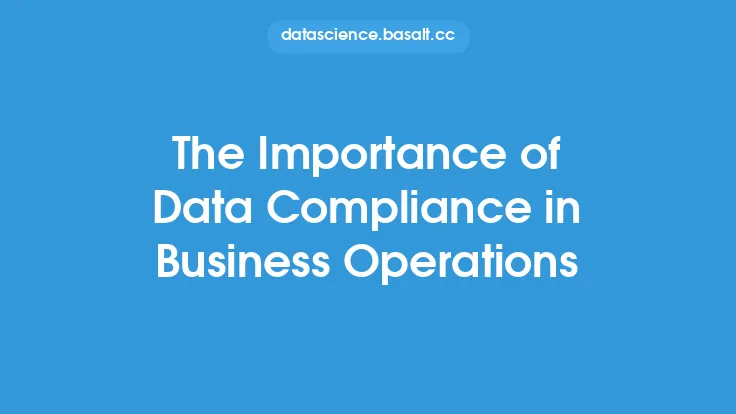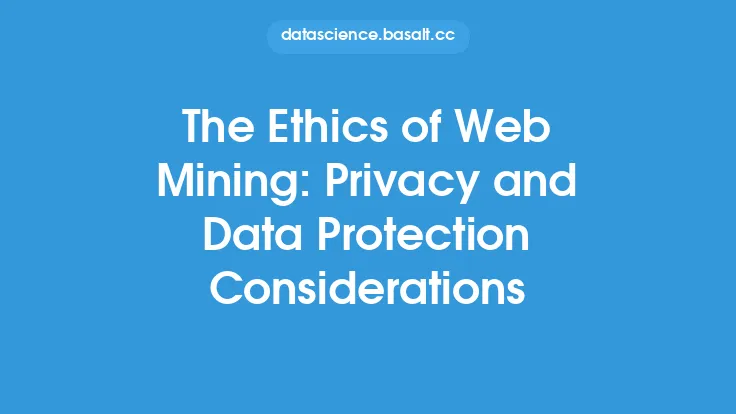Data anonymization is a critical component of privacy protection in the digital age. As organizations collect and process vast amounts of personal data, the risk of sensitive information being exposed or misused increases. Anonymization techniques help to mitigate this risk by transforming identifiable data into a de-identified format, making it more difficult for unauthorized parties to access or exploit the information. In this article, we will delve into the importance of data anonymization in privacy protection, exploring its benefits, techniques, and best practices.
Introduction to Data Anonymization
Data anonymization is the process of modifying personal data to prevent the identification of individual data subjects. This is achieved by removing or transforming identifiable elements, such as names, addresses, and identification numbers, to create a de-identified dataset. Anonymization can be applied to various types of data, including structured data, such as databases, and unstructured data, such as text documents and images. The goal of anonymization is to protect sensitive information while still allowing the data to be used for legitimate purposes, such as research, analysis, or business operations.
Benefits of Data Anonymization
The benefits of data anonymization are numerous and significant. By anonymizing data, organizations can reduce the risk of data breaches and cyber attacks, which can result in significant financial losses and reputational damage. Anonymization also helps to protect data subjects from identity theft, stalking, and other forms of harassment. Additionally, anonymized data can be shared more freely, both within and outside an organization, without compromising sensitive information. This facilitates collaboration, innovation, and the development of new products and services. Furthermore, anonymization can help organizations comply with data protection regulations, such as the General Data Protection Regulation (GDPR) and the California Consumer Privacy Act (CCPA), which mandate the protection of personal data.
Techniques for Data Anonymization
Several techniques are used to anonymize data, including:
- Data masking: This involves replacing sensitive data with fictional or anonymous data, such as replacing names with pseudonyms or addresses with fictional locations.
- Data encryption: This involves converting plaintext data into ciphertext, making it unreadable to unauthorized parties.
- Data perturbation: This involves introducing random errors or noise into the data to prevent identification of individual data subjects.
- Data aggregation: This involves combining data from multiple sources to create a de-identified dataset.
- Differential privacy: This involves adding noise to the data to prevent identification of individual data subjects while preserving the overall statistical properties of the data.
- K-anonymity: This involves modifying the data to ensure that each record is identical to at least k-1 other records, making it more difficult to identify individual data subjects.
- L-diversity: This involves modifying the data to ensure that each record has at least l different values for a given attribute, making it more difficult to identify individual data subjects.
Best Practices for Data Anonymization
To ensure effective data anonymization, organizations should follow best practices, including:
- Conducting a thorough risk assessment: This involves identifying sensitive data and assessing the risks associated with its collection, processing, and storage.
- Implementing robust anonymization techniques: This involves selecting the most appropriate anonymization technique for the specific use case and data type.
- Monitoring and evaluating anonymization effectiveness: This involves regularly reviewing and testing anonymized data to ensure that it remains de-identified and protected.
- Providing transparency and notice: This involves informing data subjects about the collection, processing, and anonymization of their personal data.
- Ensuring data quality and integrity: This involves ensuring that anonymized data remains accurate, complete, and consistent, and that it is not compromised during the anonymization process.
Challenges and Limitations of Data Anonymization
While data anonymization is a powerful tool for protecting sensitive information, it is not without its challenges and limitations. One of the main challenges is ensuring that anonymized data remains useful and relevant for its intended purpose. Over-anonymization can result in data that is too general or abstract to be useful, while under-anonymization can leave sensitive information vulnerable to exposure. Additionally, anonymization techniques can be complex and resource-intensive, requiring significant expertise and investment. Furthermore, anonymized data can still be vulnerable to re-identification attacks, which involve using external data sources or advanced analytics to identify individual data subjects.
Future of Data Anonymization
The future of data anonymization is likely to be shaped by emerging technologies, such as artificial intelligence (AI) and machine learning (ML). These technologies can be used to develop more sophisticated anonymization techniques, such as AI-powered data masking and ML-based data perturbation. Additionally, the increasing use of cloud computing and big data analytics is likely to drive the development of more scalable and efficient anonymization solutions. However, as data anonymization techniques evolve, so too will the threats and challenges associated with data protection. Therefore, it is essential for organizations to stay vigilant and adapt their anonymization strategies to address emerging risks and threats.
Conclusion
Data anonymization is a critical component of privacy protection in the digital age. By transforming identifiable data into a de-identified format, anonymization techniques can help to mitigate the risk of sensitive information being exposed or misused. While anonymization is not a silver bullet, it is a powerful tool that can be used in conjunction with other data protection measures to safeguard sensitive information. As data collection and processing continue to evolve, it is essential for organizations to prioritize data anonymization and stay up-to-date with the latest techniques and best practices. By doing so, they can protect sensitive information, build trust with data subjects, and maintain a competitive edge in an increasingly data-driven world.





